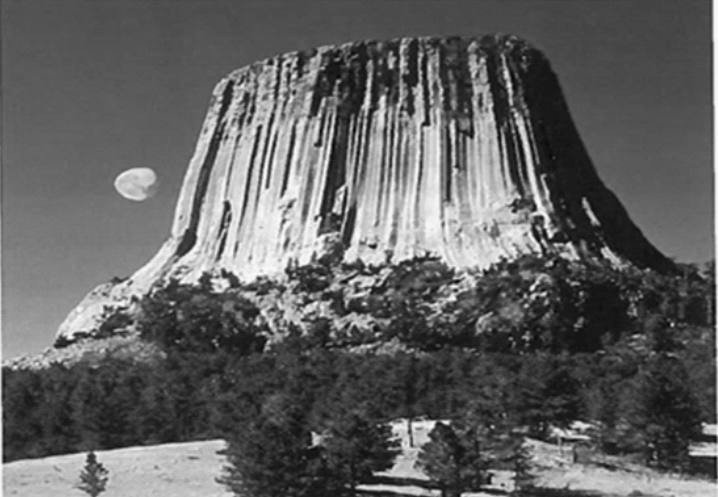
Universe
11th Edition
ISBN: 9781319039448
Author: Robert Geller, Roger Freedman, William J. Kaufmann
Publisher: W. H. Freeman
expand_more
expand_more
format_list_bulleted
Question
Chapter 3, Problem 5CC
To determine
Whether the moon in the figure below is rising or setting, if the moon is not quite full, as it appears slightly dark on its right side.

Expert Solution & Answer
Want to see the full answer?
Check out a sample textbook solution
Students have asked these similar questions
The new moon is the first phase of the moon. During the day, a new moon
is between the sun and the Earth. It's daytime, so we usually can't see it.
Then, at night, the moon is on the other side of the Earth. Because the
moon is not lighting up the sky, this is the best time to see stars and
constellations.
New moon
Which of the following best describes the relationship between the new moon phase
and constellations?
During the new moon phase, constellations take on different shapes due to a lack
of moonlight.
During the new moon phase, constellations are on the same side of the earth as
the sun.
huring the new moon phase, constellations are easier to see due to a lack of
moonlight.
During the new moon phase, constellations are easier to see due to increased
sunlight.
The angle of the lit portion of the moon relative to the horizon changes. For example, sometimes the crescent moon looks like a crooked smile; other times it looks like a hat cocked at an angle. The lit portion of the moon doesn't really rotate, so why does it look like it does? What is REALLY happening?
The timing of Moonrise is later every day. Let’s understand why: a) Moonrise occurs when you, as you sit on the rotating Earth, turn to the point where you can just see the Moon appear over the horizon. Draw a picture to illustrate what this would look like. Draw the Earth, Moon, and you standing on the Earth to indicate this scenario. (You’ve seen my artistic skills in class, I’m not asking you to do anything better than that. Just label/make clear what is shown). Take this as Day 1.In 24 hours, you would return back to that exact point on the Earth. However, the Moon will also have moved forward in its orbit (it orbits the Earth in the same direction that the Earth is spinning). How far along in its orbit does the Moon move? That is, assume the Moon is orbiting in a circular orbit; in going from Day 1 to Day 2,
how many degrees does thee Moon move forward? Indicate (very roughly) via a drawing.b) Because the Moon advanced in its orbit, you now must wait…
Chapter 3 Solutions
Universe
Ch. 3 - Prob. 1CCCh. 3 - Prob. 2CCCh. 3 - Prob. 3CCCh. 3 - Prob. 4CCCh. 3 - Prob. 5CCCh. 3 - Prob. 6CCCh. 3 - Prob. 7CCCh. 3 - Prob. 8CCCh. 3 - Prob. 9CCCh. 3 - Prob. 10CC
Ch. 3 - Prob. 11CCCh. 3 - Prob. 12CCCh. 3 - Prob. 13CCCh. 3 - Prob. 14CCCh. 3 - Prob. 1CLCCh. 3 - Prob. 1QCh. 3 - Prob. 2QCh. 3 - Prob. 3QCh. 3 - Prob. 4QCh. 3 - Prob. 5QCh. 3 - Prob. 6QCh. 3 - Prob. 7QCh. 3 - Prob. 8QCh. 3 - Prob. 9QCh. 3 - Prob. 10QCh. 3 - Prob. 11QCh. 3 - Prob. 12QCh. 3 - Prob. 13QCh. 3 - Prob. 14QCh. 3 - Prob. 15QCh. 3 - Prob. 16QCh. 3 - Prob. 17QCh. 3 - Prob. 18QCh. 3 - Prob. 19QCh. 3 - Prob. 20QCh. 3 - Prob. 21QCh. 3 - Prob. 22QCh. 3 - Prob. 23QCh. 3 - Prob. 24QCh. 3 - Prob. 25QCh. 3 - Prob. 26QCh. 3 - Prob. 27QCh. 3 - Prob. 28QCh. 3 - Prob. 29QCh. 3 - Prob. 30QCh. 3 - Prob. 31QCh. 3 - Prob. 32QCh. 3 - Prob. 33QCh. 3 - Prob. 34QCh. 3 - Prob. 35QCh. 3 - Prob. 36QCh. 3 - Prob. 37QCh. 3 - Prob. 38QCh. 3 - Prob. 39QCh. 3 - Prob. 40QCh. 3 - Prob. 41QCh. 3 - Prob. 42QCh. 3 - Prob. 43QCh. 3 - Prob. 44QCh. 3 - Prob. 46QCh. 3 - Prob. 47QCh. 3 - Prob. 48QCh. 3 - Prob. 49QCh. 3 - Prob. 50QCh. 3 - Prob. 53Q
Knowledge Booster
Learn more about
Need a deep-dive on the concept behind this application? Look no further. Learn more about this topic, physics and related others by exploring similar questions and additional content below.Similar questions
- Examine the list of upcoming lunar eclipses in Table 3-1. What fraction of years have two eclipses?arrow_forwardBy what factor is the full moon brighter than Venus at its brightest? (Hint: Refer to Figure 2-6.)arrow_forwardThe illuminated side of the Moon as seen from Earth is growing smaller. More than half of the visible moon is illuminated. What phase is it? Waning gibbous Waxing gibbous O Waxing crescent O First Quarter Waning crescent O Third Quarterarrow_forward
arrow_back_ios
arrow_forward_ios
Recommended textbooks for you
 Stars and GalaxiesPhysicsISBN:9781305120785Author:Michael A. Seeds, Dana BackmanPublisher:Cengage Learning
Stars and GalaxiesPhysicsISBN:9781305120785Author:Michael A. Seeds, Dana BackmanPublisher:Cengage Learning
 Stars and Galaxies (MindTap Course List)PhysicsISBN:9781337399944Author:Michael A. SeedsPublisher:Cengage Learning
Stars and Galaxies (MindTap Course List)PhysicsISBN:9781337399944Author:Michael A. SeedsPublisher:Cengage Learning
 Foundations of Astronomy (MindTap Course List)PhysicsISBN:9781337399920Author:Michael A. Seeds, Dana BackmanPublisher:Cengage Learning
Foundations of Astronomy (MindTap Course List)PhysicsISBN:9781337399920Author:Michael A. Seeds, Dana BackmanPublisher:Cengage Learning AstronomyPhysicsISBN:9781938168284Author:Andrew Fraknoi; David Morrison; Sidney C. WolffPublisher:OpenStax
AstronomyPhysicsISBN:9781938168284Author:Andrew Fraknoi; David Morrison; Sidney C. WolffPublisher:OpenStax

Stars and Galaxies
Physics
ISBN:9781305120785
Author:Michael A. Seeds, Dana Backman
Publisher:Cengage Learning


Stars and Galaxies (MindTap Course List)
Physics
ISBN:9781337399944
Author:Michael A. Seeds
Publisher:Cengage Learning


Foundations of Astronomy (MindTap Course List)
Physics
ISBN:9781337399920
Author:Michael A. Seeds, Dana Backman
Publisher:Cengage Learning

Astronomy
Physics
ISBN:9781938168284
Author:Andrew Fraknoi; David Morrison; Sidney C. Wolff
Publisher:OpenStax
Time Dilation - Einstein's Theory Of Relativity Explained!; Author: Science ABC;https://www.youtube.com/watch?v=yuD34tEpRFw;License: Standard YouTube License, CC-BY